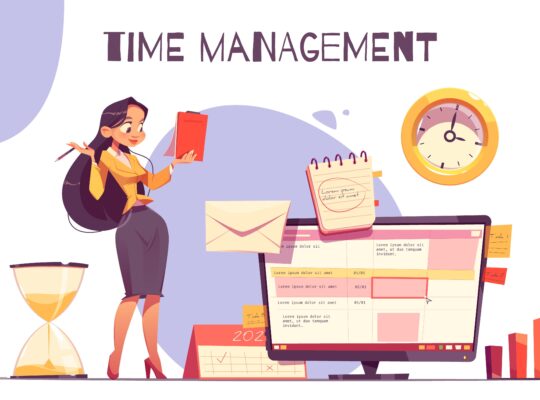| Time Management Tips: Following Through | ||
| Instructor: Dave Crenshaw | ||
| Released: 11/25/2019 | Course Details 37m Beginner | |
| Skills Covered Time Management | Course Link | |
| Professional Certifications and Continuing Education Units (CEUs) Project Management Institute – PDUs: 0.5 hour National Association of State Boards of Accountancy (NASABA) – CPE: 1.2 | ||
| Failing to follow through on commitments can put you behind at work and tarnish your reputation. In this installment of the Time Management Tips series, learn how to determine why you’re procrastinating, form positive new behaviors, and get your time management back on track. Productive leadership author and speaker Dave Crenshaw shares actionable tips for overcoming negative procrastination and using positive procrastination to your advantage. He explains how to stop overanalyzing and make decisions faster. Plus, discover how to handle tasks that take longer than you anticipated; finalize incomplete tasks that have been on the back burner; and cultivate more patience overall. Learning objectives – Identify one way to overcome the negative emotions you experience when you don’t feel like doing a task you’ve committed to. – Assess the best place to place your focus when following through. – Recall what you can do to improve the situation with your coworkers when you cannot meet an obligation you committed to. – List the kind of tasks that can be accomplished through background-tasking. – Explain a technique for cultivating patience. Source: LinkedIN Learning | ||
Follow-Through Tips
Following through on your commitments
Do what you say you’ll do when you say you’ll do it.
- Always have your calendar.
- Verify commitments.
- Schedule time to work on it. Overestimate how much it will take.
- Protect your time.
- Follow through.
- Report back. Let them know you completed the task so you save the other person’s time from having to follow-up with you.
Understanding why you procrastinate
Negative procrastination is detrimental because you know you have to complete a task but you keep pushing it off.
Procrastination
- Counterproductive
- Driven by emotion
Ignore the emotion you feel before starting a new task. Imagine the feeling of completion.
Commit to your calendar
- Have it immediately accessible.
- Use it for everything.
- Commit to the schedule.
- Use a “perhaps list” – running list of wonderful ideas that you have not committed to yet. Review it monthly to determine if you want to commit to it and schedule it on your calendar.
Overcome negative procrastination
Positive Procrastination
Scheduling an appropriate amount of time to complete a task.
Negative Procrastination
Continually pushing off tasks
Procrastination is usually tied to emotion. Ignore the emotion you’re feeling before doing something.
Precrastination (play on words)
Focus on the first minute of activity. When working on a large project, ask yourself, “What is the first minute of activity required?” Build onto this momentum.
Answer “why” to justify the reason. For example, why am I spending time doing this? This gives your mind a justification for the effort you are about to put on the task.
How to improve task completion
Get into the habit of overestimating. Add between 50% to 100% of extra time. Leave unscheduled time in your calendar. What do I need to do in the first minute of work?
Use positive procrastination
Positive Procrastination
Creating open space by thinking long-term.
When is the latest I can reasonably get this done? Set it back by 5% and schedule it. If something is due 6 months from now, add it on your calendar 10 days before its due.
Overcoming analysis paralysis
Analysis Paralysis
Overthinking a situation so that a decision is never taken.
- Think small – only thinking about the first minute of activity.
- Think about one thing at a time
- Break down projects – cut them in half and then in half again
- Self-impose a time limit.
- Focus on progress, not perfection.
Increasing follow-through by making yourself accountable
Accountability (in this context)
Reporting to and getting training from a third party.
- Make a commitment to accountability.
- Use a third party (friend, mentor, manager, professional coach)
- Test it out.
- Adjust over time.
Did this person speak to you or help you in a way that you responded well to?
What to do with incomplete tasks
What do you do to make sure the task gets completed in time and you don’t fall into a pattern of always falling behind?
- Place the task back into an approved gathering point.
- Use What, When, Where processing
- Schedule enough time to complete the task
Use background-tasking to get more done
Switch-tasking vs. background tasking
Switch-tasking
Trying to perform two things at the same time.
Background Tasking
When something automatic occurs in the background of an activity.
- Delegation – only a few activities are most valuable. It’s better for someone else to do less valuable activities.
- Use a machine
- Personal opportunities – daily commute – listen to audio book, exercise while watching something.
Getting your time management back on track
- Find an accountability partner.
- “When is the next time I can devote 1 day to get back on track?”
- Go through Time Management Fundamentals
Taking responsibility for finding answers
Become a better problem solver. Reduce the number of focus switches. Use search engines. Avoid using social media. Reach out to a professional.
How to cultivate more patience
We often expect instant results.
- Use a schedule – set reasonable expectations when long-term changes will occur.
- Quantify small victories
- Take regular breaks.
| Remember! To experience the full benefit of this guide, I highly recommend you watch the full training session. |






